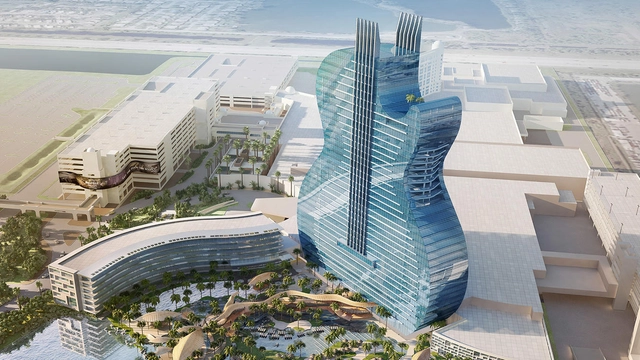
This article was originally published by The Architect's Newspaper as "Rockin’ guitar-shaped Florida hotel celebrates construction milestone."
Hoteliers and musicians smashed guitars in Hollywood, Florida to celebrate a construction milestone at the Seminole Hard Rock Hotel & Casino, a $1.5 billion entertainment complex featuring a mega guitar-shaped hotel.
The 450-foot-tall hotel will boast more than 600 rooms, around half of the complex’s total, plus a 41,000-square-foot spa and a few restaurants. At the tower’s base, guests can swim underneath waterfalls in plunge pools, relax in private cabanas, and partake in water sports in a giant artificial lake. Right now, the existing Seminole Hard Rock Hollywood hotel has almost 500 rooms, as well as a casino, meeting space, restaurants, and a lagoon pool.
















_Yam_Studio_for_KCAP-OSLO-SAS-3B_place.jpg?1510362904)


.jpg?1510680321)























































.jpg?1510084039&format=webp&width=640&height=580)





